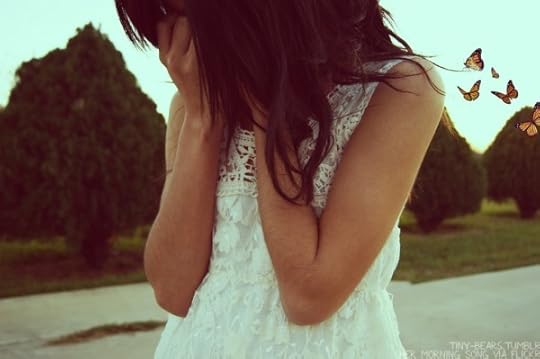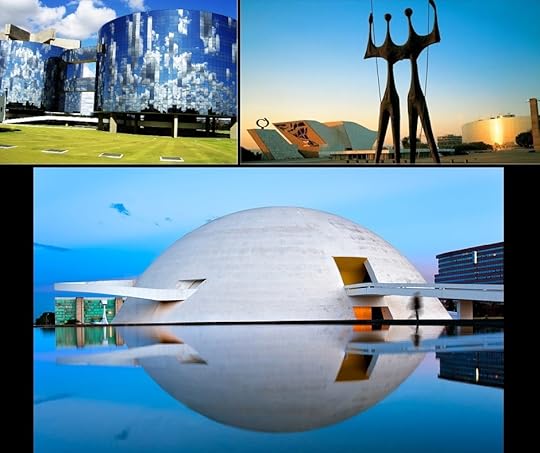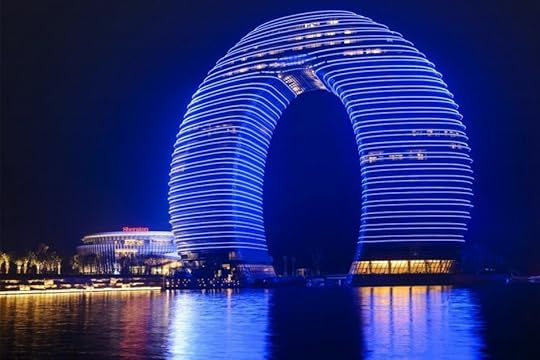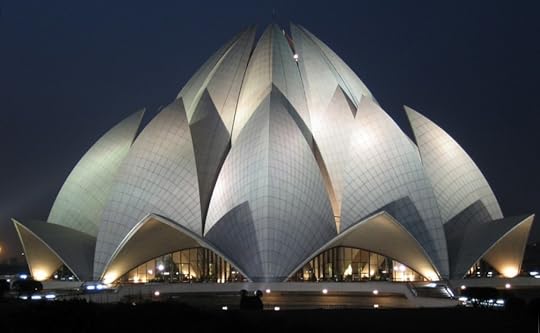Matador Network's Blog, page 2295
March 26, 2014
What tourists always do in Maine

Photo: Tris Hussey
Maine: the land of plunging coastal cliffs, serene mountaintops, small communities, and Chinese-made lobster paraphernalia. Nearly 28 million tourists stampeded the Pine Tree State in 2012, a number only expected to rise in coming years.
Here’s what you can find most tourists doing.
Eating lobster ice cream
Lobster ice cream: sounds disgusting, is disgusting. Tiny frozen lobster chunks are swirled into homemade creamy vanilla ice cream to ensure that every last penny is milked from the obscene cash-cow teat that is Maine lobster.
Buying shit that says “Yessah!” and “Wicked!” on it
Did you come all the way up here, to the state that is primarily believed to be ‘just part of Canada,’ to spend 50 bucks on a tie-dyed pair of sweatpants with a moose on the ass? Or to buy a pillow with a blueberry on it? If you need a pillow with a blueberry on it, 20 bucks, I’ll do it. Serious inquiries only — my contact information is below.
Never leaving the corporate safety of the waterfront
An idea of a perfect vacation: Freezing your ass off on a whale watch tour in the harbor, probably not seeing any whales. Eating a lobster roll on the pier that’s probably composed of pre-packaged lobster and 90% mayonnaise. Having dinner at an ‘authentic’ Irish pub called ‘Paddy’s,’ where your waitress will probably speak to you in Leprechaun, and you’ll probably giggle over a $10 Guinness and scarf down a $25 shepherd’s pie.
Here’s what you should really do in Maine:
1. Swim in a swimming hole.
Maine is filled with precarious rope swings and skinny-dipping spots. Here are just two:
The Long Pond Cliffs
Do you enjoy jumping off of a 20-foot cliff into somewhat refreshing water on a hot August afternoon? So do Mount Desert Island’s locals. Here, you can watch absurdly athletic drunk kids front flip into Long Pond from an extremely high point. Or in turn, you can compete with the ‘shy pencil,’ a straight-legged and plugged-nose jump done from the out-of-sight and much lower right-hand corner of the ledge. Or you can say that you don’t want to get your hair wet and just sit there.
In Southwest Harbor, take Long Pond Road for a little over a mile, take a right onto an unmarked dirt road with a park sign, and park along the loop. The trail to the cliffs will be to your right.
The Lakewood Swimming Hole
Once rumored to be a popular nighttime hangout for the local gay community, Lakewood has recently become a hangout for the local pot-smoking and swimming-enthusiast community.
Located off of the unmarked Lakewood Pond Road in Bar Harbor (take the Crooked Road 0.7 miles and turn left), there’s a small ‘parking lot’ and a path that’ll take you to the water. I suggest BYOF-ing (Bring Your Own Floatie). In which case I’d recommend jumping onto your flotation device off of the shallow ledge and promptly falling asleep on it as you slowly tour the lake.
Tips and warnings: Although remotely located, Lakewood is still part of the Acadia National Park system and is often monitored by the (friendly but authoritative) park rangers. Also, you might get a leech on you.
2. Go see some local music.
Open mic nights are prime spots to observe hipsters in their natural habitat. The Lompoc Café in Bar Harbor, for example, is a great place to find the politically correct, free-spirited, and fashion-forward granola of Mount Desert Island’s youth culture, sensitively strumming on one or more ukuleles in unison. Often overrun with the rowdy restaurant-industry crowd, this event doesn’t get started until around 9:30 every Thursday night.
Lompoc has an outdoor patio with bocce ball, where you can pass the time and wait for the music to start. But you should expect to be watched closely by the territorial onlookers, waiting for you to lose so they can play.
Tips and warnings: Service at Lompoc is very lackadaisical. You should probably go ahead and order your second drink when you finally receive your first.
3. Buy lobster from a real lobsterman.
Get yourself down to the docks by late afternoon, wait for the lobster boats to come in, buy some lobster from anyone who looks the part, bring it to a campsite, and cook it your own damn self. Although lobster in Maine is a $365 million industry, Maine lobstermen are only receiving an average of $2.89 per pound for their catch, a hefty price cut since the mid-2000s.
If you order in a restaurant, your 1.5lb lobster has probably changed hands at least five times before landing on your $30 plate. Buying directly from the source ensures you’re supporting the struggling economy of Maine lobstermen, and not purchasing an even cheaper Canadian-caught, frozen-and-shipped version of the ‘Maine’ delicacy.
4. Play ring toss and get late-night takeout at the Dog and Pony Tavern.
Ring toss. There’s a metal ring attached to a string, attached to the ceiling. There’s a hook screwed into a wall. There are drunken lobstermen, standing around and criticizing. There’s you, miserably failing.
The Dog and Pony is one of the only bars open year-round on Mount Desert Island, making it a real locals’ spot. In the fall it’s known for some pretty heated fantasy football competitions, and in the summer it’s known for the late-night takeout window, which can also get heated.
The window is open from 1am until every drunk girl in spike heels is fed. You can expect a very satisfying Styrofoam container of fries, given to you by a very crabby woman.
5. Go to the Commonground Fair.
Maine is a big state with a small community. We’re not heavily populated, and we have yet to be drastically changed by all that hubbub technology of the modern world. Therefore, we’re still having town-hall meetings, contra dances, and farmers’ markets, and not just because they’re cool and ‘offbeat.’
If you want something more authentic than a corporate Irish pub, plan your vacation around the Common Ground Fair, put on by the Maine Organic Farmers and Gardeners Association. The Fair has been a thing for 40 years. You’ll meet real-time farmers, masons, herbalists, activists, and carpenters. You’ll eat some really kickass French fries, and you’ll watch some incredibly intelligent border collies herd ducks. That’s Maine, in a weekend.
6. Fuck with other tourists.
If you have the time, and you have a dulcimer (or other melodious sounding instrument), camouflage yourself in the mid-afternoon and hike up high into the woods overlooking the carriage trails of Acadia National Park.
Like hunting, this sport requires patience and silence but swift action at the precise moment. If you’re good, you’ll know when to anticipate the whimsical passing of a tourist family on bicycles, chatting pleasantly (sometimes whining) as they maneuver the flat, gravel, tree-lined trail. Or perhaps you’ve snagged yourself a copy of the horse-drawn carriage schedule — that’s better. Either way, eerily strum your dulcimer as the tourists pass, pause, and nearly shit themselves when they realize there’s creepy music playing in the middle of the woods. Or, alternately, exclaim how thoughtful it is that Acadia National Park has provided them with theme music, in that exact spot, in the middle of nowhere.
Bonus exercise: While hiking, tell foreign tourists that the trail blueberries they’re eating are known to have hallucinogenic properties when picked in the wild. 
The post What tourists always end up doing in Maine (and 6 better options) appeared first on Matador Network.

22 documentaries you should watch
No art form is as flexible or open to new voices as the documentary film. No running time is better or worse than another, no subject is too large or too small, and all the traditions of narrative film are thrown out the window in the search for depth, truth, and novelty.
The best of these movies can sway public opinion, touch the nerves of the world — just ask Michael Moore — or change your life forever. Whether you’re in search of a fresh perspective, an unabashed polemic, or pure, heartwarming entertainment, here’re 22 documentaries you should watch as soon as possible. Trust me.
1. The Act of Killing, 2012
Why: Joshua Oppenheimer’s tour-de-force film seems like an impossible one to make, but it’s even harder to take your eyes off of. Over almost four hours of running time, Oppenheimer and his subjects, the perpetrators of the 1965 Indonesian genocide, recreate the atrocious mistreatment and oppressive rule they continue to perpetrate on the country to the present day. You’ll be sick to your stomach (almost) as often as you laugh.
2. Harlan County, USA, 1976
Why: Arguably the best film ever made about labor conflict, Barbara Kopple’s documentary feature made international headlines for its unflinching portrait of a violent strike in Kentucky. Gripping and tragic, Harlan County, USA cemented its director as one of the finest nonfiction filmmakers in history.
3. Searching for Sugar Man, 2012
Why: The myth of Dylanesque American folk singer Sixto Rodriguez came to life in this Oscar-winning investigative documentary from 2012. Perhaps no documentary has ever had a more successful soundtrack — and Rodriguez, the film’s subject, has become an international icon from this darling film.
4. The Story of the Weeping Camel, 2003
Why: Have you ever wanted to see an albino camel cry at the sound of a musical instrument? How about watching a nomadic Mongolian family adjust to life in an ever-changing world? If you answered “yes” to either of these questions, then Byambasuren Davaa’s masterful semi-narrative docudrama is essential viewing. Warning: Bring tissues.
5. Crumb, 1994
Why: This glimpse into the life of infamous oddball and genius cartoonist R. Crumb is as rich a portrait as any film I’ve ever seen. At turns truly disturbing — Crumb and his family suffer from various forms of mental illness — and visually stunning, the movie presaged the re-entrée of comics and graphic novels into mainstream film.
6. Blackfish, 2013
Why: Gabriela Cowperthwaite’s agenda-driven ‘thriller-mentary’ about the mistreatment and subsequent misbehavior of a SeaWorld-owned killer whale has drawn the attention of the world’s major news outlets. This is for good reason: So effective, upsetting, and propulsive is the filmmaking that the theme park has seen its business model collapse as the movie’s reputation continues to grow.
7. The Civil War, 1990
Why: I recommend setting aside a Saturday to binge-watch all of Ken Burns’s seminal PBS documentary miniseries The Civil War, an overwhelming, unparalleled historical survey about the bloodiest period in the history of the United States. Even better: PBS offers the entire series for free.
8. The Last Waltz, 1978
Why: No concert documentary comes close to the sadness and grace of Martin Scorsese’s masterful, coked-out look at the final tour of The Band in 1976. Keep a lookout for Bob Dylan, Joni Mitchell, Neil Young, and other guests whose very presences here remind us of their enormous collective impact on American music and culture.
9. Night and Fog (Nuit et Brouillard), 1955
Why: The recently departed Alain Resnais (RIP, big guy), the genius behind seminal flicks Last Year at Marienbad and Hiroshima Mon Amour, was also a nonfiction filmmaker of uncanny skill. His short documentary film on the liberation of Nazi concentration camps after WWII was one of the first ever shot at the camps themselves with permission of the German government.
10. Urbanized, 2011
Why: Gary Hustwit’s trilogy on different forms of design — starting with the enjoyable Helvetica and the fantastic Objectified — concluded in 2011 with his most impressive documentary ever, a film on urban architecture, development strategies, and city building. It may sound like a snoozefest, but Hustwit’s intellectual engagement and childlike fascination with some of the world’s greatest architects and city planners is contagious.
11. Grizzly Man, 2005
Why: Few films on this list are as haunting as Grizzly Man, a nonfiction look at the life and death of environmentalist and bear enthusiast Timothy Treadwell. As directed by Werner Herzog, this documentary goes first to the heart and then deep, deep into the subconscious. And you’ll never forget the tape of Treadwell’s last moments on Earth.
12. Encounters at the End of the World, 2007
Why: I wasn’t the only person to notice what an enthralling documentary Grizzly Man was; Herzog’s movie was so popular that he was asked in 2006 to shoot a film on the McMurdo Station in Antarctica. For all of his oeuvre’s typical darkness, this documentary chooses instead to mosey calmly, even respectfully, through the lustrous glacial wilderness. One thing’s for sure: It’s the best penguin-related documentary available.
13. The Thin Blue Line, 1988
Why: So cohesive, expertly shot, and convincing are the arguments in Errol Morris’s breakout documentary that the filmmaker is considered to have freed a convicted murderer from jail the day before his execution. Adding to the prestige of this extraordinary investigative doc is the fact that, on the basis of its significant cultural (and financial) success, subject Randall Dale Adams went on to sue Errol Morris for a little extra dough.
14. Dogtown and Z-Boys, 2001
Why: Though the above link has some French subtitles, that shouldn’t stop you from joining nonfiction director Stacy Peralta on her journey inside the mythos and careers of the Zephyr “extreme skateboard” team.
15. Jiro Dreams of Sushi, 2011
Why: The only reason David Gelb’s portrait of sushi master Jiro Ono isn’t higher on this list is the extreme mouth-watering that comes from watching the film. As much a character study — and a charming one at that — as a dissection of the social mores and behaviors of contemporary Tokyo, this foodie-friendly flick rolls along at a brisk pace.
16. Before You Know It, 2013
Why: Three gay seniors in contemporary America — a cross-dressing widower, a flamboyant Texan bar owner, and a Harlem-based LGBTQ activist — relate their stories of wisdom and lessons learned in this fantastic indie. Shot with tenderness by director PJ Raval, the film, not yet theatrically released, begs to be pre-ordered as it finds its loyal audience.
17. Spellbound, 2002
Why: Everyone loves a good spelling bee, but it helps to be as funny as Jeffrey Blitz’s debut documentary. Eight key competitors face off — for onscreen time as well as the championship — while we start, quickly and unexpectedly, to root for each of them. Though not all win the bee, of course, most of them earn our love by the film’s end.
18. Point of Order, 1964
Why: At the height of his power, fearmongering Senator Joseph McCarthy had begun to pepper members of the American government with frightening amounts of slander, distrust, and public shame. What better way to unveil his legacy as one of abuse and evil than in the brilliant cinema verite editing of legendary doc-maker Emile de Antonio. And speaking of verite legends…
19. Don’t Look Back, 1967
Why: Bob Dylan and Joan Baez on tour. Oscar-winning director D.A. Pennebaker. A feud with Donovan. ‘Nuff said.
20. Reindeer, 2013
Why: Eva Weber’s remarkable short film is the shortest by far on this list, clocking in at hardly over three full minutes. But within those minutes are some of the most beautiful images of Scandinavia ever put on film in the form of the Karigasniemi village reindeer wranglers of Utsjoki, Finland.
21. Perfect Film, 1986 (reported)
Why: How to explain the serendipitous discovery of 22 minutes of lost-and-found newsreel footage from the assassination of Malcolm X? Why, do as Ken Jacobs did in a 1986 Canal Street pawn shop in New York City: Legally purchase the film negatives for a couple bucks, retitle the footage, and call it an experimental film!
22. Shepard & Dark, 2012
Why: Treva Wurmfeld’s first feature-length documentary paints a portrait of playwright and actor Sam Shepard in the least common way: through his close relationship with another, far-less-famous writer, Johnny Dark. Wurmfeld’s handheld style and close encounters with both men helps to get to the core of what makes Shepard such an icon — and his legend such a good story. 
The post 22 documentaries you should watch immediately appeared first on Matador Network.

March 25, 2014
5 facts about travel in Bolivia

Photos: author
1. Bolivian transport can be tricky.
The first thing most travelers will encounter in Bolivia is the transport system. Like in most of South America, people get around the country via an extensive bus network — but experiences on these can vary.
The process of catching a Bolivian bus deserves a post all to itself, so for now I’ll mention the bare basics: speeding drivers, bizarre departure and arrival times, a constant gamble as to the bus temperature — you get the idea. For short-term transport, though, I spent most of my time in two sorts: taxis and trufis.
Taking trufis and taxis in Bolivia
When I first arrived in La Paz, I was pretty nervous about catching the local buses. Known as trufis, these little minibuses throng the city’s streets and feature ticket sellers leaning out of the open doors shouting their destinations — information supported by a placard propped up in the windscreen.
The problem is that the drivers essentially make up their routes: If there’s a roadblock or too much traffic, they simply go another way. For tourists, who barely know the name of the street their hostel is on, this is something of a difficulty.
Luckily, by the time I conquered my fear and boarded a trufi, I’d walked around enough of the city to know which direction we were speed-driving in. And if I ever lost my bearings, I’d simply shout, “Esquina por favor!” and jump out at the nearest corner. A rule I never would have learnt without experiencing it first, however worried I was about getting lost.
Bolivia is also the only country where I’ve been consistently required to know both the directions to and eventual location of where I’m headed infinitely better than the taxi driver. Slews of drivers have looked terrified when I flagged them down — that is, if they stopped at all. Numerous taxis have driven straight past me, or started their engines and sped off as soon as they heard an address they weren’t explicitly familiar with.
I stayed at an incredible hostel in Cochabamba, which was marred solely by the fact that absolutely no taxis had any clue how to get there. My favourite journey back to Las Lilas was with a driver who held an expression like a frightened rabbit for the entire 10-minute ride. I had to continually coax him to take each turn and clambered out of the car exhausted.
Bolivian transport: The positives
There are a number of benefits to the way Bolivians travel. First off, Bolivian transport is cheap. Hence why I took taxis a lot of the time — something that’s never been a habit in other South American countries.
Secondly, the experience is usually pretty friendly. On every trufi ride, I realised each passenger said “buen día” or “buenas tardes” as they boarded, presumably to the rest of the bus, and I adopted the tactic very early on.
Third, and most appealing to me, is that being a taxi driver in Bolivia is often a full family operation. Many times I’ve caught taxis with the driver’s son or daughter, wife or girlfriend in the front seat — and once, in Sucre, even met a newborn baby, whose father clearly couldn’t bear to spend his days away from her. Despite the numerous strange drivers, there are also many who are really eager to chat away in Spanish about what you’re doing in Bolivia.
Sadly, though, these conversations were often tainted by a troublesome issue: paying the fare.
2. Dealing with money in Bolivia is stressful.
As in many countries around the world, people in Bolivia have a problem giving out change. I understand why — one tourist pays with a big note, and suddenly all your spare coins disappear as a result.
But when the biggest Boliviano note in common circulation is 100Bs, equivalent to £10 or $14, it becomes rather frustrating to constantly argue with taxi drivers, tienda owners, and restaurant waitresses, who consistently maintain that they don’t have change.
I often found myself pretending I didn’t have smaller denominations in these situations, just to be able to break a note. It’s not the nicest feeling but sometimes ends up being totally necessary.
The pricing of products also carries its own set of difficulties. More often than not, I had the sneaking suspicion that sellers were simply making their prices up on the spot. Regardless of whether it’s due to obviously being a foreigner, things got problematic when I tried to barter with the clearly invented price and was either bluntly shot down or laughed at.
Of course, the huge positive aspect to money in Bolivia is that pretty much everything is insanely cheap. Whether it’s a 10-hour bus journey for £10, a three-course meal with wine for £5, or an en suite room in a hotel for £7, sometimes it’s necessary to put things into perspective a bit.
3. Eating in Bolivia is always an experience.
Bolivians certainly know how they like their food. In a country that’s home to thousands of different varieties of potato, the locals supplement a starch-heavy diet with a nationwide obsession with sweet stuff: Plastic cups of coloured gelatine topped with whipped cream are sold on every street corner, sugary empanadas are grasped in sticky hands, and Coca Cola is the drink of choice.
The weirder Bolivian food customs you’ll see: people drinking juice out of plastic bags (actually a rather sensible idea), and most older Bolivians chewing on a ball of coca leaves to combat the effects of altitude (which results in a constant bulge in their cheek).
Bolivian food: The positives
Luckily, Bolivia’s food offerings have kept me happy more often than not, particularly the menu del dia. While daily helpings of soup, rice, meat, and plátano can sometimes get old, this simple meal is a quick, cheap fix for being hungry.
Outside of the typical Bolivian lunch, there’s a number of chances to happen upon amazing eateries if you just go looking. Potosí has incredible hot chocolate, we indulged in cheese fondue twice in Copacabana, and in Sucre I ate the best steak of my entire life at a churrasqueria not even mentioned in Lonely Planet or on TripAdvisor.
Most importantly, the attitude Bolivians have towards eating is ultimately communitarian, and it’s a lovely thing to see. When someone passes your table in a restaurant, you’ll usually hear “buen provecho,” the Spanish equivalent of “bon appétit.” There’s also nothing odd about sharing your table with strangers, a trait I think many other cultures would benefit hugely from.
4. Bolivian culture is absolutely fascinating.
There’s no doubt in my mind that Bolivia’s cultural traits are one of the main reasons it stands out so much.
Indigenously dressed men and women are a common sight in all towns, villages, and most big cities. Young boys shine shoes in the middle of the street, their faces covered by balaclavas to conceal their identities. Llama fetuses hang above market stalls, inviting people to bury them under the foundations of their houses for good luck.
These aspects of Bolivian life are things a foreigner simply can’t hope to understand. And Bolivians themselves have many behavioural eccentricities that often prove acutely stressful for a foreigner such as myself.
5. ‘Giving advice’ actually means making things up.
On Boxing Day in Copacabana, we wanted to hire a motorbike. It was a great way to spend an afternoon, zipping along the lake’s coastline to a few scenic spots, and we’d questioned the elderly gentleman renting out bikes a few days before. He’d given a good price for four hours of rental on an automatic bike — “Yes of course, we definitely have automatics” — and things seemed set.
Except when we arrived he wheeled out a tired, battered, and bruised bike and proceeded to explain that there were only four gears we needed to use.
“So it’s not automatic,” I ventured.
“Si, si, it is! There is no clutch, so it’s automatic,” he said, grinning. I tried again.
“No, if it has gears, it isn’t automatic. We asked for an automatic because we don’t know how to drive with gears!” His teenage accomplice attempted a different tactic.
“This road is straight. It’s flat. It’s an automatic road,” he said, unsuccessfully evading eye contact with me.
Time and time again, these things happened in Bolivia. A stranger would confidently point me in the wrong direction to an address I asked about, a shop owner would tell me they didn’t stock produce I could clearly see on the shelf.
But then again, some of Bolivia’s cultural craziness is what really makes the country special. 
This post was originally published at Flora the Explorer and is reprinted here with permission.
The post 5 things to know before traveling to Bolivia appeared first on Matador Network.

The importance of trust in travel
Ze Frank, the longtime internet personality first known for his wonderful dancing GIFs, and now probably best known for his informative and hilariously bizarre True Facts series, recently put together this meditation on trust, featuring Cirque de Soleil performers Alya Titarenko and Gael Ouisse. Frank mentions the importance of trusting in someone so you can relax and pay more attention to other parts of your surroundings, and it strikes me that this is one of the most fundamental features of serious travel.
International travelers have all probably had their trust betrayed at some point, because to a certain extent, every person you meet in a foreign country must be immediately trusted. That cab driver at the airport? You have to trust he knows how to drive, isn’t cheating you, or isn’t taking you to a remote spot to get robbed. You have to trust that your fellow hostelers aren’t going to rifle through your pockets when you aren’t looking, or that your hotel room lock is truly secure — that only you have the key, and that the cleaning crew has no interest in your passport or cash.
There are of course things you can do to give trust to fewer people — private hired cars, combination safes, unshared rooms — but those are a) generally all more expensive, and b) defeat much of the purpose of travel. Because as we move through the world, we’re spending a good deal of our time putting our lives in complete strangers’ hands. And there are plenty of times our trust will, both in small and big ways, be betrayed.
But if we want to keep traveling, after each betrayal we need to get out of our bed the next day and start trusting again. 
The post This Cirque de Soleil routine will teach you the meaning of trust appeared first on Matador Network.

March 24, 2014
On the benefits of that job you hate

Photo: .bravelittlebird
Get a job you hate, and you’ll feel nothing but freedom when you leave. If you need to take time to save up, take that boring receptionist job in your hometown that you can use as a catalyst. Have too many roommates, cook cheap pasta dinners, and put as much of your paycheck as you can spare toward your plane ticket. Give your two-weeks notice, and feel nothing but liberation — you’re abandoning nothing but that job you hate.
Get a job you hate, because your adventure is more important than your paycheck. Walk dogs and clean kitchens in Barcelona, because mastering salsa and the Spanish subjunctive is worth the dirty dishwater. Pick kiwis in exchange for meals and a bed in the New Zealand countryside, because the sunset over the mountains will ease your aching back. Take any opportunity that prolongs the adventure, and don’t dare think about how it will look on your resume.
Get a job you hate, so you can learn to leave work at work. Feel the tedium, exhaustion, or apathy creep into your skin, but when it’s time to clock out, be gone. Shred through the fallacy that a career can be perfectly fulfilling, the notion we stake everything on when we chant the “Follow Your Dreams” mantra.
In the job you hate, understand what people mean when they say the loss of one sense makes the others grow stronger. When your outside passions, interests, and relationships carry you through miserable work, you won’t forget to nurture them once you land the job you love.
Get a job you hate, and pay attention to why you hate it. Avoid those qualities in your future. Learn that the lifestyle, skill sets, and temperament needed in your chosen path carry far more weight than your initial attraction to a particular industry. Our aspirations tend to focus too heavily on what we want to be — a firefighter, a doctor, a producer, a zookeeper — reducing complex individuals to their uniforms and media depictions. Focus instead on how you want to spend your days.
Let your job fuel your hate-fire and aim you toward what you love.
If your mind grows numb at your challenge-free desk job, seek active work with problems that need solving. If you can’t stand your stressful 80-hour workweek, find out what you can give up in order to scale back. Be honest with yourself about what you need to be happy. When you find your needs changing, adapt to them. Discover which aspects of your work life — schedule flexibility, financial stability, creative control — you are not willing to sacrifice, and work around them.
Get a job you hate, but know for a fact it is temporary. It’s far easier to cruise along in a job you don’t mind, but also far more toxic. If job satisfaction is a spectrum, it seems desirable to get as near the top end as possible, but in the middle lies true danger.
Horrible jobs are valuable in their transience — they allow you a peek into a world for a short period of time. When you find yourself in the quicksand of a job you feel apathetic about, look at your opportunities for advancement. If none of them excite you, cut your losses before you feel you’ve invested too much in a job you merely tolerate.
Get a job you hate, and keep your eyes on the prize. Start small. If the job you hate is in an industry you love, with a foreseeable path toward your dream job, keep going. Hustle hard, and work your way up. If it isn’t, if the job you hate is entirely unrelated to your field, look laterally. Hustle harder, and explore what you love on the side. If you want to write or produce or make music, start creating. If you need to go back to school, save up. Take night classes. Let your job fuel your hate-fire and aim you toward what you love.
Get a job you hate, but make sure you can see the end point. Brainstorm, hustle, analyze, explore, stay mindful, make contacts, do work on the side. Learn patience, gratitude, and self-worth, even if you must do so by experiencing their polar opposites. Get familiar with your passions, skills, and values, and be honest with yourself.
Then, and only then, go get that job you love. 
The post If you want to travel, get a job you hate appeared first on Matador Network.

10 signs you're a tourist in SF

Photo: Drew Herron
You’re a new transplant to the city. You’ve got a Giants hat on your head, an ‘artisan’ pour-over coffee in hand, and a sleek new road bike locked up right outside the coffeeshop. You pay too much in rent.
So you must be a local now, huh? Not so fast. Here’s why you’re still a tourist in San Francisco.
1. You say “San Fran.”
Sure, it sounds pretty cool — to people that don’t live in San Francisco. Dropping “San Fran” mid-conversation is a sure-fire way to show others that you haven’t been in town too long. The city doesn’t need a nickname, but if you’re going to go with one, try one of the others: SF or “the City.” People don’t call them “San Di” or “Los Ange,” do they?
2. You don’t layer up.
If it’s nice out, think twice before leaving your house without a sweater or jacket. Once the hour hand strikes 5pm, you’re going to be wishing you had one. When the first gust of cold air cuts through your American Apparel Tri-Blend V-neck, you’re going to be heading in either of two directions: home (to get a jacket) or the mall (to get a jacket). Don’t ruin a good time — layer up.
3. You don’t curb your wheels.
You head to Ikea to furnish your new place. Once you’ve gotten your fill of Swedish meatballs, you drive back to the city with intentions of strolling around Russian Hill. You find a spot on Union and Larkin, nail the parallel parking job, and go for a walk. You forget to curb your wheels and come back to see the worst-case scenario: Your car’s careened into a 2014 Mercedes S-Class. A slightly better scenario? You get an easily avoidable parking ticket. Hopefully you remember to turn your wheel the correct direction next time.
4. You stand to the left.
Ever wonder why people behind you on the BART escalator happen to sigh repetitively every time you’re on it? Move over. Stand to the right. Walk to the left. Simple. Don’t worry — you’ll find yourself sighing at others soon enough. If you’re smart, you’ll bring this information with you to every escalator you come across.
5. You eat at chains.
All these amazing restaurants in the city, and you still go to the Cheesecake Factory in Union Square for dinner? Walk down Valencia Street. Throw a rock in any direction. Go there for dinner. You’ll thank yourself for it.

More like this: Why San Francisco hates Los Angeles
6. You frequent Pier 39.
If you really dig the sourdough, seals, and gimmicky shops (who knew a store that only carries left-handed goods could stay in business?), turn off your phone before heading to Pier 39. It would be a shame if anyone knew that’s what you do for fun. If you really want to wait in a crowd, opt for some warm pastries at Tartine Bakery instead. Please. Entertainment? Stroll over to Castro Theatre and see what’s playing.
7. You line up to ride the cable cars.
So you’re fine with spending excessive amounts of money to ride the cable cars. You’re going to wait in line at the first and last stops, too? That’s okay, but you’re better off hopping on at any other stop that’s not at the beginning or end of the line. You won’t have to waste a large chunk of time, which could be better spent shopping for overpriced goods at Pier 39.
8. You don’t step down on Muni.
If you’re getting off a Muni bus through the back door, don’t just stand there staring at the door waiting for it to open. Once the green light turns on, pay attention. Step down onto the first step to make the doors open. Magic! Take this to heart, or risk being jeered at by everyone within a 15ft radius of your being. One small step for you, one giant leap for everyone trying to get home after a long day at work.
9. You’re going to the beach for a swim.
Yes, San Francisco does have a beach. But, honestly, do you really want to go swimming in a wetsuit or risk hypothermia? Yes!? Polar Bear Club applications are over there.
10. You tell people to visit in June.
June sounds like a great time to visit, but you’re better off telling your friends and family to visit in October when it’s warmer. The months of June and July are cold and foggy. If your friends are into that, maybe it’s time to find new friends. Mark Twain wouldn’t have been too far off if he actually did say “the coldest winter [he] ever spent was a summer in San Francisco.”
Go forth, and be a tourist no longer. 
The post 10 signs you’re still a tourist in San Francisco appeared first on Matador Network.

Girl speaks gibberish in 15 accents
I’VE ALWAYS WONDERED what English must sound like to someone who speaks no English at all. I’m also amazed at how so many people, especially in developing nations, are fluent in their native language and English (and sometimes several more languages), while I can barely get by on “survival” foreign language skills. This girl named Sara, aka “Smoukahontas,” is pretty amazing in that she is able to translate, into gibberish, phrases in over 15 different languages. And I thought speaking Czech set me apart from other linguists…
The post Girl speaks gibberish in 15 accents, demonstrating what they sound like to non-speakers appeared first on Matador Network.

Skiing the greatest snow on Earth
Production notes
Cameras used: Canon 7D, 70D, 5D markII; GoPro Hero 3+, JVC Adixxion
Dates shot: February 12-16, 2014
Music by Senator Hayes
Edited by Yancy Caldwell in Final Cut Pro 7
Stoke notes

Photo: Will Wissman
0:08 – Snowbasin opens up to bluebird skies and 1+ foot of fresh.
0:14 – Powder Mountain, the largest skiable acreage in the lower 48, was closed down due to heavy snowfall and high winds.
0:16 – The view from the top of the tram at Snowbasin.
0:18 – Private cat-skiing at Powder Mountain — the best kept secret in Utah.
0:20 – The tram to the top of Snowbasin delivers 3k+ of vertical goodness.
0:22 – Glorious views of the Great Salt Lake off the backside of Snowbasin.
0:28 – A large avalanche crown from ski patrol bombing, Sundown sidecountry, Powder Mountain.
0:37 – Wyatt Caldwell blows up a massive blast of The Greatest Snow on Earth in the trees at Powder Mountain.
0:46 – Utah local Hayden Price plows through 2+ feet of fresh in the Alta sidecountry.
0:50 – Reggie Crist powder POV in the Utah backcountry.
0:55 – Alta base area timelapse as Mt. Superior swirls in the evening light.
0:58 – Treetop POV shot by Will Wissman on a Snowbird sidecountry run.
1:00 – Kitt Doucette enjoys first tracks off the top of a Snowbasin ridgeline.
1:13 – Timelapse of a brief clearing of clouds from the top of Powder Mountain.
1:15 – Timelapse of Mt. Superior shot by Will Wissman.
1:17 – Carlo Travarelli drops cliff in Utah backcountry.
1:20 – Yancy Caldwell pops off a snowbank on a snowed-in day atop Powder Mountain.
1:25 – Cat-skiing at Powder Mountain is an all-time experience.
1:26 – Wyatt Caldwell blasts through the deepness at Powder Mountain.
1:38 – Pat Lee and Yancy Caldwell get barreled in The Greatest Snow on Earth, Powder Mountain.
1:45 – Kitt Doucette gets him some in the Powder Country, PowMow.
1:50 – Reggie Crist explains why skiing in Utah is like nothing else.
2:00 – Tony Rossi bags some airtime on a pow day at Snowbird.
2:10 – Sam Cohen drops a massive peak in the Utah backcountry.
2:20 – Will Wissman charges pow in the Utah backcountry.
2:28 – Patrick Lundin, Powder Mountain’s marketing director, hard at work.

 This post is brought to you by Utah, home of The Greatest Snow On Earth®. With 11 ski resorts less than an hour from Salt Lake City International Airport, there’s plenty of powder for the perfect ski vacation.
This post is brought to you by Utah, home of The Greatest Snow On Earth®. With 11 ski resorts less than an hour from Salt Lake City International Airport, there’s plenty of powder for the perfect ski vacation.
The post What it looks like to ski the greatest snow on Earth appeared first on Matador Network.

30 super trippy buildings [pics]
These architectural oddities range from super-modern skyscrapers to organic treehouses, but all share the common theme of being super trippy.
The single biggest architectural project here is Brasilia, the capital of Brazil. The entire downtown was designed by Oscar Niemeyer in the late 1950s and had a totally futuristic style, that to this day remains almost UFO-like. But there are lots of individual buildings and even small dwellings that blend the lines between art and architecture for their curvilinear forms or way they flow into the landscape.
How do the spaces you inhabit affect you? What are the strangest buildings and spaces in your area? 

1
Biblioteca España
Set on a hilltop in Santo Domingo near Medellin, Colombia—an area that was heavily affected by violence and drug trafficking in the 1980s and 1990s—Biblioteca España was built as part of an initiative to enhance urban development and to provide more opportunity to the city's poorest residents.
Photo: danjeffayelles

2
Dutch cube houses
Netherlands residences shaped like cubes, the
Kubuswoningen, or Cube Houses, are a set of innovative houses designed by architect Piet Blom in 1984 in Rotterdam. There are 38 small cubes and two so called "super-cubes," all attached to each other.
Photo: Andrea de Poda

3
Vortex House
"Vortex House" was an art installation in Montrose, Houston, on a house awaiting demolition. Unfortunately, the house has already been torn down.
Photo: Michael Cote

See more like this: 30 of the world's most beautiful bridges

4
Dalat's Crazy House
This strange hotel was designed by Dang Viet Nga, an avant-garde artist who got away with more weirdness than she otherwise would because she was the daughter of Ho Chi Mihn's successor. It's known as "Crazy House."
Photo: upyernoz

5
Seattle Central Library
The Seattle Central Library was built in 2004 to be an inviting and functional public space. Its "Book Spiral" displays the library's entire nonfiction collection in one continuously winding run, enabling library-goers to peruse the 4-level section without being interrupted by stairs.
Photo: Stephen J. Friedman, MD

6
Krzywy Domek
This fairytale-inspired building is part of a shopping center in Sopot, Poland, and its name means "little crooked house."
(via)

7
Brasilia
Master architect Oscar Niemeyer (December 15, 1907 – December 5, 2012) was among the most influential designers of all time. When Brazil decided to build its new capital city Brasilia in a spacious inland area, he had the rare opportunity to design and build an entire interlinked downtown which included the congress, supreme court, and cathedral.

8
Twisted House
The Twisted House in the Indianapolis Arts Center in Indiana was created by John McNaughton of Evansville. It is made of cedar.
Photo: Serge Melki

9
Upside down house
An upside down house in Trassenheide in Germany. Even the furniture inside is stuck to the ceiling.
Photo: Backkratze
Intermission

Amazing libraries around the world [PICS]

15 super unique libraries around the world [PICs]

30 of the world’s most beautiful bridges [PICs]
[image error]
10
Hotel Marqués de Riscal
This is a smart fusion of award-winning wine and avant-garde architecture. Spain’s Rioja vino is a favorite for many, and a visit to the region makes for an interesting trip in rural Spain, especially if staying at Hotel Maqués de Riscal. The hotel’s flamboyant style is signature Gehry, who has left his artistic imprint on other parts of the country as well.
Photo: HaSHe

11
Trippy Singapore density
The sheer density of Singapore's buildings warrants its spot on this list.
Photo: Aiste Stancikaite

12
House Attack
While this traditional home wedged into the roof of Vienna's modern art museum may look perfectly residential (except for being upside down), it's an art piece designed by Erwin Werm.
(via)

13
Donut hotel
Recently built in Guangzhou, China, this enormous glowing donut is actually a hotel. It was designed so that the reflection of the building would form a number 8, a lucky number in Chinese culture.
(via)

14
Dancing House
Designed by Frank Gehry and supported by Vaclav Havel, this government administrative center in Prague looks like someone melted half an office building and smooshed it into the other half. It's on the Czech 2,000-koruna coin.
(via)

15
Bubble houses
The "Maison Gaudet" bubble houses in the south of France are designed by Antti Lovag, an anti-conformist architect with no diploma who built this residence after an experimental model in 1969.
Photo: Muracciole Jean-Marie
Intermission

23 iconic lighthouses around the world [PICs]

Low eco-footprint houses in rural France [pics]

Abandoned train and subway stations of the world [PICs]

16
Atomium
This fantastic building was built in Brussels for the 1958 World's Fair. Standing 335ft tall, the structure lacks sufficient external support, so only six of the nine spheres are open to the public.
(via)

17
Casa Batlló
This stunning modernist building in Barcelona was designed by Gaudí for a family home but is now used primarily for a museum and event space.
(via)

18
Lotus Temple
A Bahá'í temple in New Delhi, India, the Lotus Temple has drawn over 50 million visitors since it opened, making it one of the most visited buildings in the world.
(via)

19
Montaña Mágica Lodge
This Chilean eco-hotel is located in the middle of a UNESCO-preserved rainforest and is built inside a manmade volcano that erupts water from the top, which flows down the sides.
(via)

20
Nautilus House
This amazing shell-shaped house was built as a family home in 2006 and is full of natural glass mosaics that reflect colored light into the rooms.
(via)

21
Free Spirit Spheres
Free Spirit is a campground with style—you stay in suspended spherical treehouses in the temperate rainforest of Vancouver Island.
(via)

22
Waldspirale
This German residential building complex looks like an organic layer cake and contains 105 apartments and a small courtyard with an artificial lake. It also has a green roof.

23
Lyons Airport Train Station
Lack of public transportation to nearby Lyons makes this beautiful train station difficult to use for anyone who isn't hopping a TGV train to the Alps, but it's directly attached to the airport, making it the first impression many tourists get of southern France.
(via)

24
Motisons Tower
The Motisons Jewellers building in Jaipur is designed to look like a lotus flower and illuminates at night.
(via)

25
Bull Ring
The Birmingham Bull Ring is a shopping center and gathering place, built on the same place where markets in Birmingham, UK, have been held since 1154.
(via)

26
Gibbon Treehouse
This treehouse in Laos sleeps up to 8 people, and somehow has sufficient enough plumbing for a kitchen, a bathroom, and a shower. The Gibbon Experience runs these guesthouses, all of which are connected to one another with zip lines, and all profits are reinvested into conservation projects within the reserve.
Photo: Christian Haugen

27
Markthalle Altenrhein
This nature-inspired fairytale castle is actually an event center and museum in the tiny town of Staad, Switzerland.
(via)

28
Dynamic Tower
The Dynamic Tower is a prospective 80-floor moving skyscraper in Dubai that will change shape as it rotates. It will be powered entirely by wind turbines and solar power and is still in the planning stages.
(via)

29
Olympic Stadium
Montreal's Olympic Stadium was built for the 1976 Olympics and has the largest seating capacity of any Canadian stadium. While the design is impressive, the workmanship is shoddy, and chunks of the building's concrete have been falling off since shortly after its completion.
(via)

30
Guggenheim Museum
Frank Gehry's modern art museum in Bilbao, Spain, is often lauded as one of the most fantastically designed buildings in the world.
(via)
The post 30 of the trippiest buildings around the world appeared first on Matador Network.

March 23, 2014
How stupid can this college be?
RECENTLY, I WROTE an article all about why Charleston, South Carolina, is the best place you could possibly go to college. One of the reasons I listed was about how liberal Charleston is, especially in terms of our LGBT, and African American populations. I’m sad to say, I was wrong on that point.
Recently, Lieutenant Governor Glenn McConnell was chosen to become the College of Charleston’s newest president. He has zero background in academic administration, and supports the Confederate battle flag flying on South Carolina’s Statehouse grounds. He participates in Civil War reenactment as a “hobby,” but the credibility of such a pastime is questionable, when photos such as the one above — in which he is dressed as a confederate soldier, flanked by some slaves — are publicly displayed.
CofC has done some pretty shitty things in the past — they once shut down a sex toy party that was going to raise funds to help domestic violence victims, because of some stupid, outdated ordinance about it being “illegal to have pornography within one mile of a church” (there are churches on every corner in Charleston) — but this move is honestly insulting in so many ways. The two other leading candidates were both strong, with legitimate university administrative backgrounds. Jody Encarnation is a retired Harvard University professor and CofC alumni, and Martha Saunders was former president of the University of Southern Mississippi.
No one would have thought twice about electing Barack Obama if one of his policies included flying the Black Power flag on Capitol Hill. No one would have taken the President of Germany seriously if a photo of him dressed as a Nazi, between two concentration camp reenactment victims, became public. Why is it acceptable for a university, which is supposed to set a precedent for the state, and encourage students to enroll based on the fact that it is a safe, progressive, discrimination-free environment, to choose such an ill-fitting leader?
What upsets me the most, is the complete disregard CofC had for its faculty (only 11% of which support the decision) and student body. Hundreds of students protested McConnell’s candidacy on a daily basis. They exercised their democratic rights, writing letters, sending out petitions, holding forums and more. And yet, McConnell was “unanimously chosen” by the administrative board at CofC. It was a move to secure future funding for the school, but as alumni withdraw their yearly donations, and new student enrollment drops, they are going to need a lot more than what McConnell’s supporters can offer
The CofC Alumni catchphrase is #CantHideThePride. Well fuck that yo — whatever pride I once had for my alma mater, is completely gone. 
The post How stupid can this South Carolina college be? The answer: Very appeared first on Matador Network.

Matador Network's Blog
- Matador Network's profile
- 6 followers




